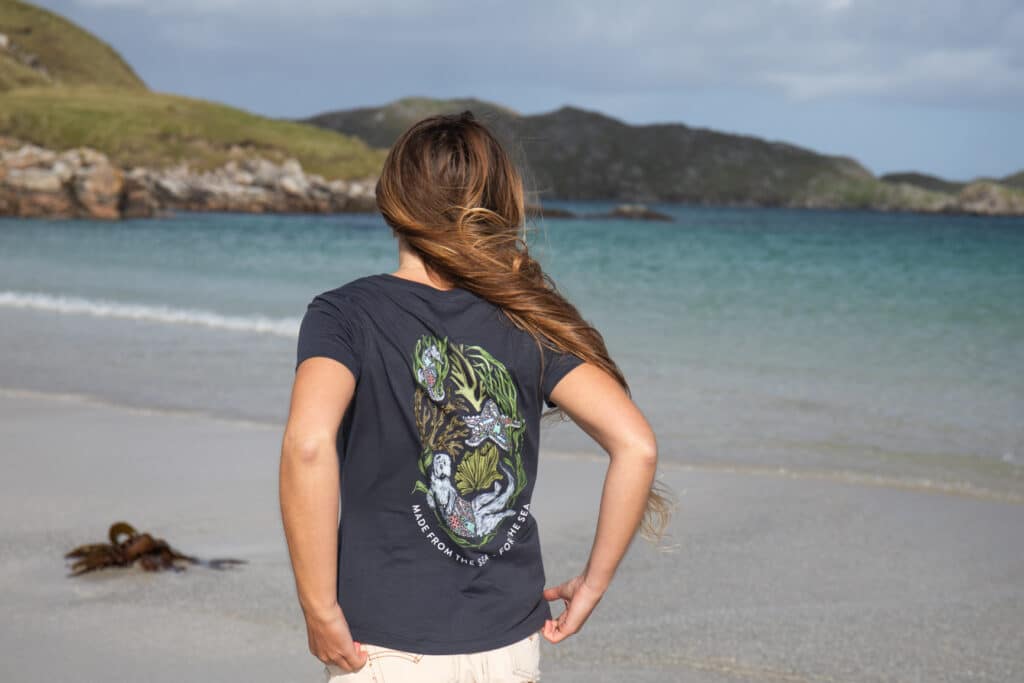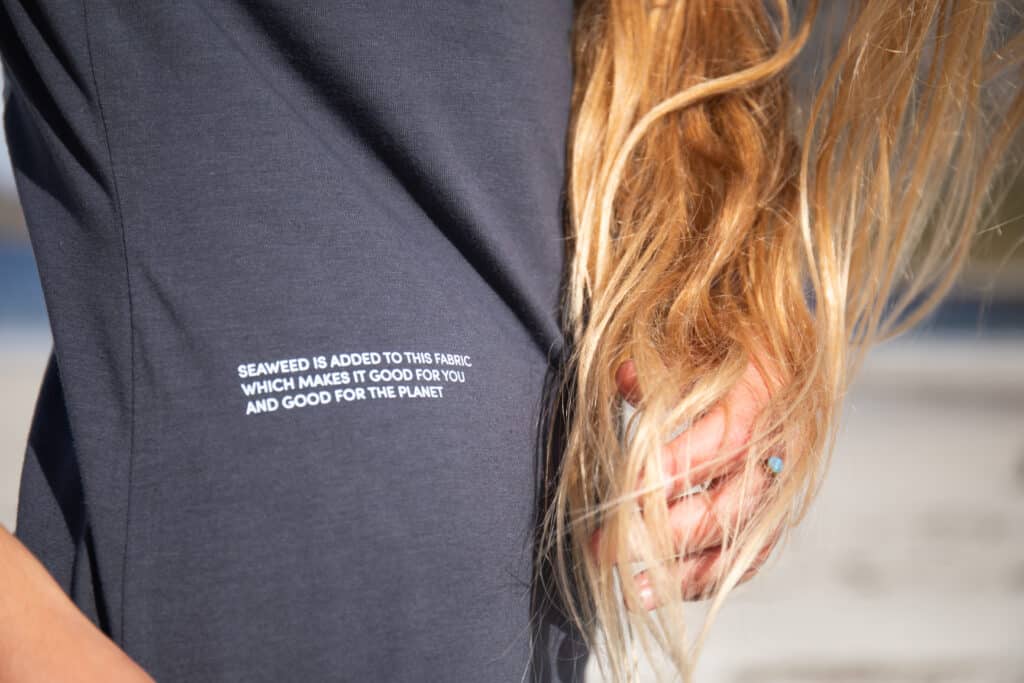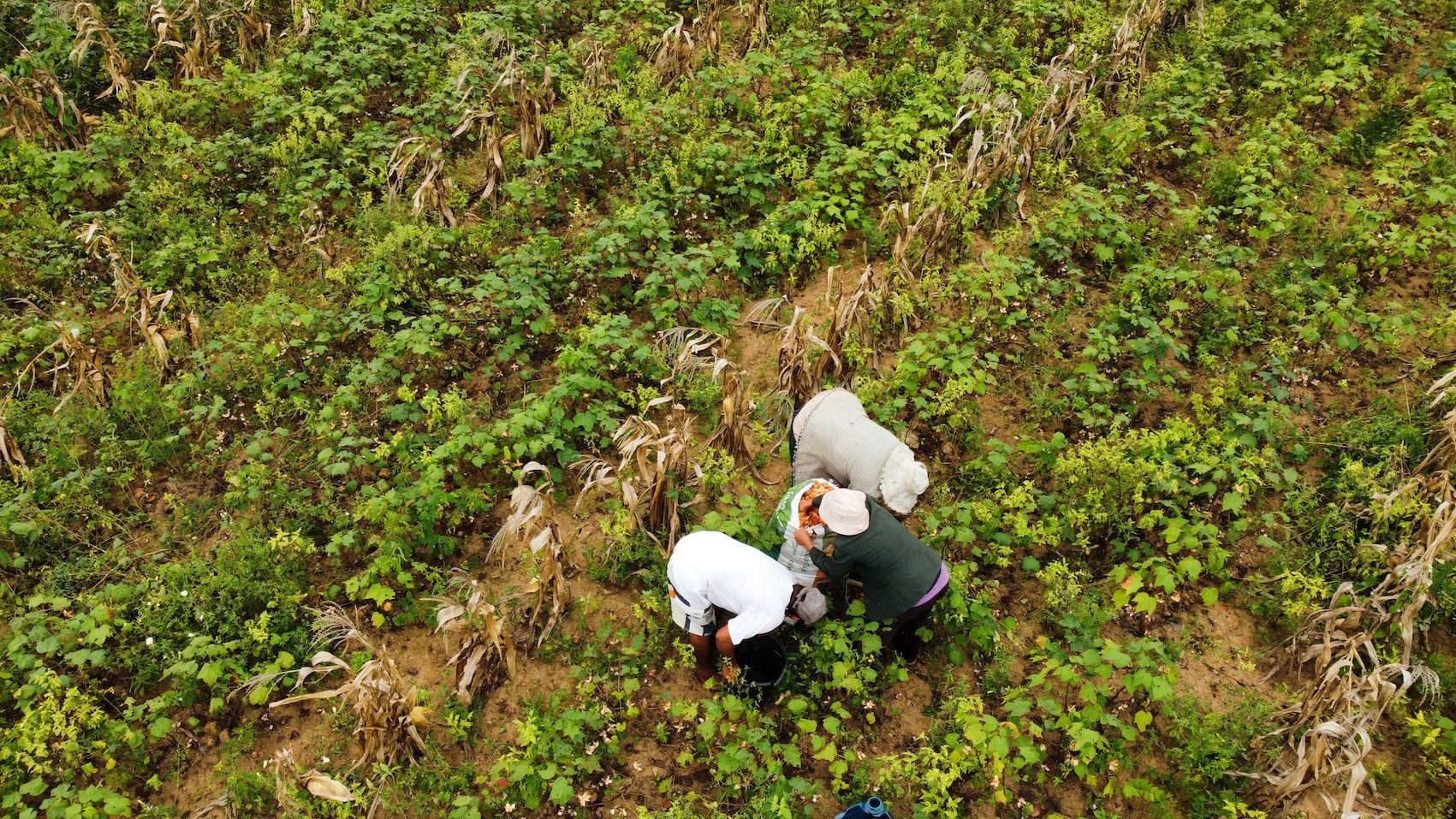Can seaweed help reduce the negative impact of fashion on the environment? ? Inland Sea, a fashion brand established in 2017 in Manchester to raise awareness of plastic pollution, thinks so! As well as being wonderful plants for natural cosmetics, seaweed can also be turned into fibres for our clothes.
For the story, Adam Costello, the founder of Inland Sea, found himself plagued by plastic and wanted to do something about it: “As an inlander, plastic is everywhere: it spills out of bins, spills onto pavements and piles up on the shelves of food shops. Since I spend most of my free time surfing, I knew very well where all this plastic ended up: in the sea. Frustrated by the media, which has always peddled greedy, planet-destroying capitalist models, rarely considering that the clothes we wear are destructive and ruin the great outdoors, investing in a greener future and banning the use of harmful materials like polyester became my personal project,” he explains.
Seaweed, the most powerful marine plant that reduces the environmental damage of the fashion industry
After discovering that seaweed could be used to make clothing, Inland Sea, launched a crowdfunding operation in 2021 and successfully produced a range of t-shirts using SeaCell™, a material that contains seaweed.
In 2022 we partnered with German company Smartfibre who produces SeaCell™. We have now become the first in the UK to spin SeaCell™ to create our own fabric.”
Although SeaCell™ is not 100 per cent seaweed, it is a starting point to see how to improve the production of fashion items in a more ethical and responsible way. Currently, innovations are underway to create 100 per cent seaweed yarns which, when ready, can be introduced into Inland Sea‘s collections.
What are the (unsuspected) properties of seaweed?
First of all, they can absorb up to 20 times more carbon dioxide than an equivalent terrestrial forest. Secondly, they do not need soil, chemicals, pesticides or water to grow. In addition, In addition, the by-product can be used as fertiliser, biofuel and even made into paper. Finally, they grow abundantly and incredibly fast, some species of kelp (brown macroalgae growing in temperate and arctic waters) and can grow up to 50 centimetres a day!
What is Seacell?
Spinning SeaCell™ with fully traceable carbon neutral “super” cotton creates SeaBlend®, a soft fabric that naturally wicks moisture. It is antioxidant and completely plastic-free.
SeaCell, like LyoCell, is a 100 per cent biodegradable synthetic fiber. However, SeaCell is made from seaweed in addition to cellulose from wood. It is one of the most sustainable fabrics because it requires very little water and no fertiliser. The best part is that these natural properties of seaweed are very beneficial to the skin, providing antioxidants and protection against free radicals.
Photo credit: Clare James







